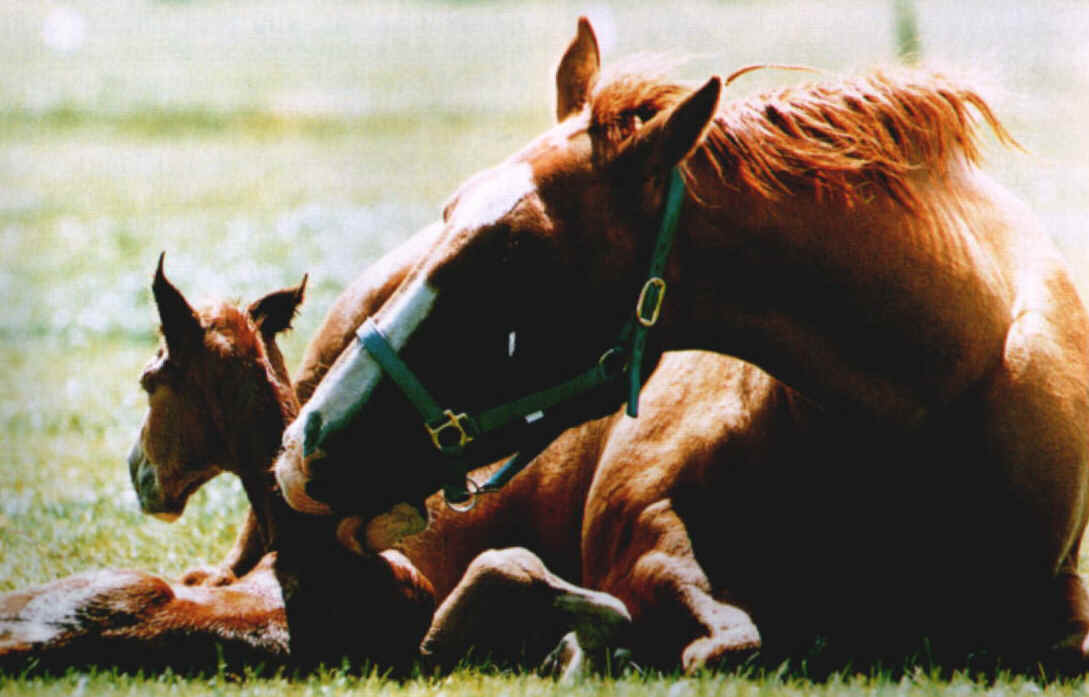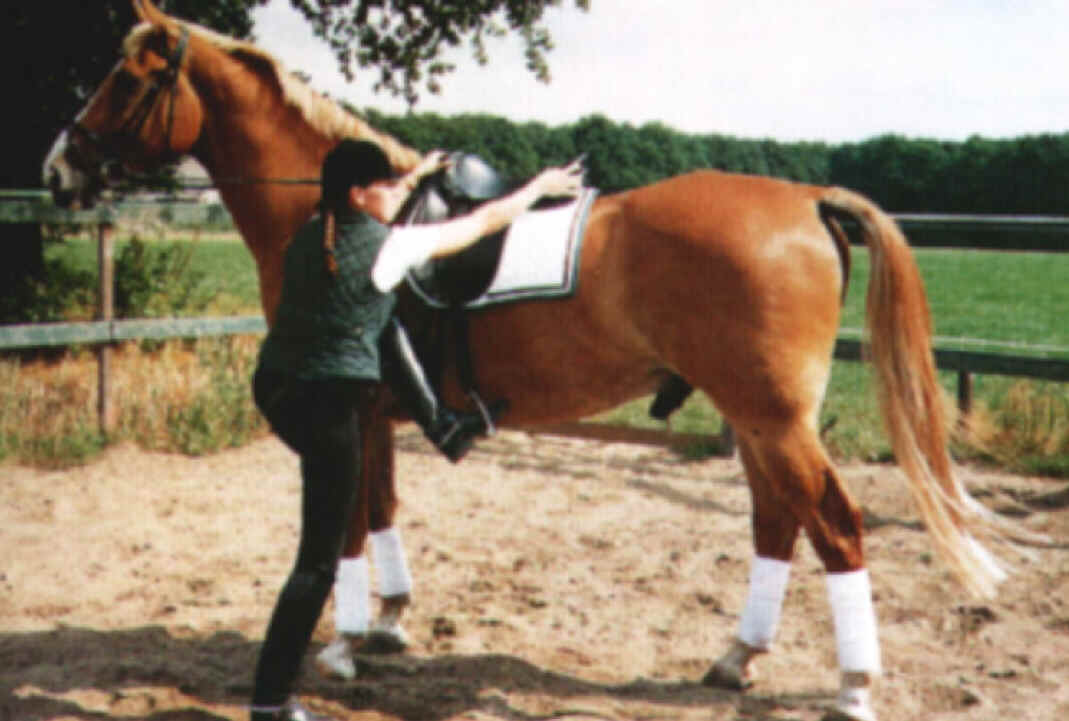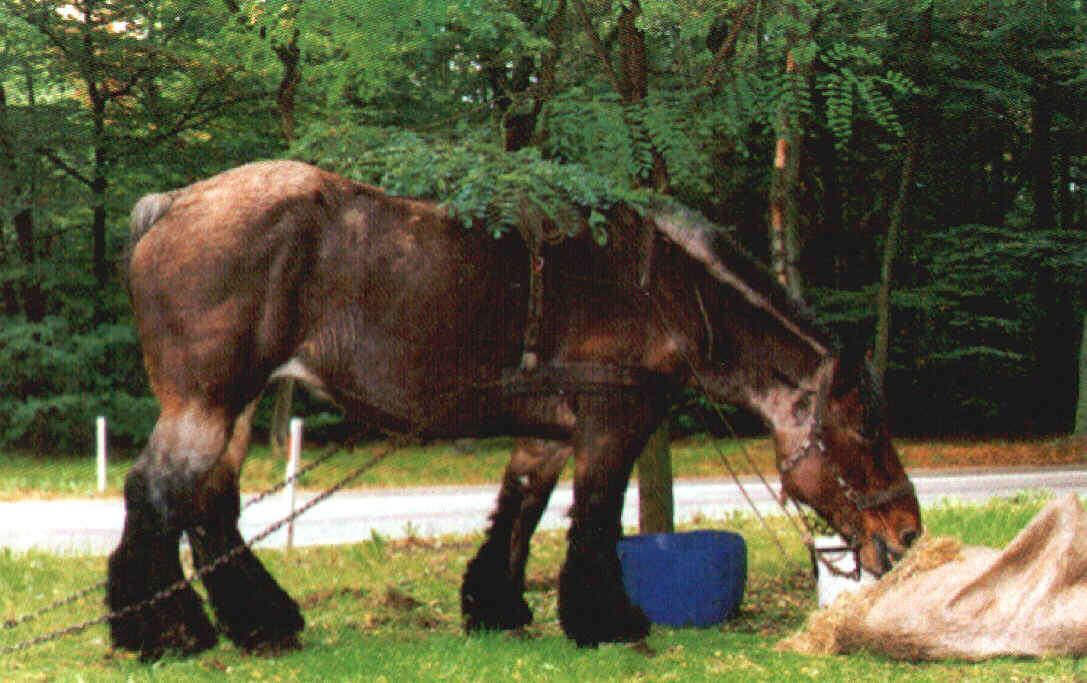



WELSH COB
Breed of light draft (pulling) and riding horse. For centuries, the Welsh cob has been the backbone of farming and country living in Wales. The Welsh cob is a small horse, standing about 142 to 153 cm (about 56 to 60 in, or 14 to 15 hands) high at the withers. (the high part of the back, located between the shoulder blades). The back is short, the chest wide and deep, and the shoulders sloping. Its well-muscled legs are short. A long, muscular neck supports the small, well-proportioned head. The Welsh cob has large, wide-set eyes and small pointed ears. It may come in any color except a painted pattern. The Welsh cob descended from the Powys cob, the mount of English armies beginning in the 12th century, which was produced by crossing the Welsh mountain pony with horses, including the barb and Spanish breeds, brought to Britain by the Romans. The modern Welsh cob was produced by crossing the Powys cob with Norfolk roadster and Yorkshire coach horses in the 18th and 19th centuries. In addition to serving as a cavalry mount, the Welsh cob was in demand for pulling heavy artillery during World War I (1914-1918) and World War II (1939-1945). It was also used by bakeries and dairies for pulling delivery wagons. This horse has tremendous weight-carrying capacity for its size, and remains a popular horse for riding, hunting, and local jumping events.
Darmoore Pony - Exmoor Pony - Fjord -Hackney - Highland Pony - Icelandic Pony
Barb (HORSE) - Bashkir Welsh Mountain Pony